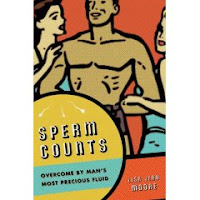
I’ve been thinking all week about that recent New York Times article by Shira Boss, titled “Wedded to Work, and in Dire Need of a Wife.” Does anyone remember an article by Judy Syfers in the premier issue of Ms. magazine, called “Why I Want a Wife?†Yes, well, that was back in 1971. Things haven’t changed that much. Except maybe our consciousness about it all.
Syfers’ article was a bit of a satire. But Jessica over at feministing has an excellent, and serious, point about the meaning of “wife†when she writes,
Now, I know the [Times] article is trying to make a point, but framing support for a spouse’s job and chores at home as “wifely” duties is not exactly the best way to hold men (remember them?) accountable for their role in the domestic sphere.
We need some new lingo. I tried to get past the old formulas in an article I wrote for July’s Psychology Today called “Two People, One Breadwinner.†After interviewing couples who could afford to have one parent staying at home with their kids while the other worked, and talking to a slew of couples counselors and psychologists for that piece, here’s what I surmised:
Breadwinner wives—still often expected by their mates to act as social director, housekeeper, and meal planner—resent stay-at-home husbands who are lax about household upkeep. Househusbands (for lack of a better term) adjusting to their new domestic roles often resent wives who tell them what to do. Primary earners of either sex can feel trapped by work, resentful that they didn’t have the choice to stay home. And primary earners can also feel let down by partners who, once professionally ambitious, now relish their domestic identities to an alienating degree.
Bottom line: regardless of who is at home and who works, tensions and resentments around the breadwinner / domestic caretaker dynamic are hardly gender specific. Of course, in the majority of American couples, both partners earn. Most of us are still trying to figure that out. But as Jessica points out, and regardless of whether couples are living off of one income or two, getting past the equation of “wife†with “domestic maid†would be an excellent place to start.







